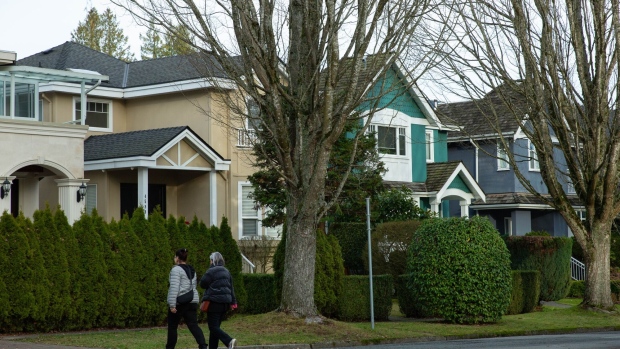Apr 11, 2024
Canada to Allow 30-Year Mortgages for First-Time Homebuyers
, Bloomberg News

(Bloomberg) -- Canada will relax the rules on mortgages to allow first-time buyers to take out 30-year loans when they purchase newly built homes.
The change to regulations on insured mortgages come into effect on Aug. 1, Finance Minister Chrystia Freeland said. It’s a move that’s primarily aimed at winning over younger voters who’ve been shut out of the housing market, or squeezed by soaring prices and high interest rates.
“First-time homebuyers will now have 30 years to pay off their mortgage instead of 25,” Freeland said Thursday in Toronto. “That translates to lower monthly payments so more younger Canadians can afford to pay that monthly mortgage on a new home.”
Canada is dealing with a huge shortage of homes to accommodate its rapidly growing population. Housing starts rose in the early part of the Covid-19 pandemic, but construction activity softened when interest rates began to rise. The government’s housing agency has estimated that at the current pace of building, by 2030 Canada will be millions of homes short of what is needed to create an affordable market.
Canada saw housing starts of about 253,000 units on an seasonally-adjusted annualized rate in February, the most in five months, according to Canada Mortgage & Housing Corp. The population grew by about 1.3 million last year.
The slower pace of building has heaped pressure on Justin Trudeau’s government to try to boost development. The prime minister hinted last week that mortgage reforms were coming in Freeland’s April 16 budget.
Canada briefly experimented nearly two decades ago with allowing insured mortgages as long as 40 years, but reversed course when poor mortgage underwriting by US lenders led to cascading defaults that contributed to the global financial crisis in 2008.
The current 25-year limit on amortizations applies to mortgages where government-backed default insurance is required. It’s been in place since 2012.
Read More: Trudeau Pledges Billions More for Apartment Construction Loans
Such insurance is mandatory in cases where the buyer is putting down less than 20% of the price of the home. In Toronto and Vancouver, the benchmark price of a home is more than C$1 million ($730,000), meaning a down payment of more than C$200,000 is needed before an individual or family can qualify for an uninsured mortgage with a longer amortization period.
A homebuyer who’s borrowing C$800,000 would save about C$380 a month in mortgage payments by stretching the repayment period to 30 years from 25, according to Bloomberg calculations.
“The payment bottom line will be better for those people. That’s good news,” Daren King, an economist at National Bank of Canada, said by phone. “But if you’re not improving the supply issues that we’re having, then you’ll just drive prices upward and that won’t solve the affordability issue in the medium to long run.”
The move doesn’t mean homebuyers will be able to lock in rates for 30 years — Canadian mortgage rates reset more frequently than that.
Down Payments
Freeland also pledged that existing homeowners who’ve had to stretch their mortgage amortizations due to financial hardship may be able to keep those longer repayment periods, without fees or penalties.
“Canadians work really hard to be able to buy and afford their homes, and it is only fair that mortgage lenders should help Canadians do everything they can to afford their homes at a time of higher interest rates,” she said.
She also announced that first-time homebuyers will be able to pull more money from their registered retirement savings plans to use in a down payment on a home. The legal limit is being raised to C$60,000 from C$35,000.
Robert Kavcic, a senior economist with Bank of Montreal, said the new mortgage measure would have a limited overall impact on the housing market. “I don’t think it stokes demand or it would do anything to trigger the market in a way that would concern the Bank of Canada.”
--With assistance from Erik Hertzberg and Jay Zhao-Murray.
(Updates with additional information on payment changes, quotes from economists)
©2024 Bloomberg L.P.






